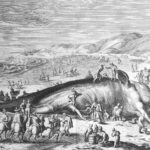While a debate is ongoing on whether the Nobel prize awarded to AI related studies make sense, there have been other major discoveries in the field of archaeology. The ancient Nazca Lines in Peru that have long fascinated archaeologists and researchers with their enigmatic geoglyphs has now some new glyphs added to the list.
In a groundbreaking collaboration between Yamagata University in Japan and IBM’s Thomas J. Watson Research Center in New York, researchers deployed a cutting-edge AI model to analyse aerial photographs of the Nazca desert. This powerful AI combed through vast amounts of drone-captured data, identifying potential patterns in the landscape that had gone unnoticed by human researchers. The result was the discovery of 303 new geoglyphs, raising the total number of known Nazca figures to 733.
What sets this discovery apart is the efficiency of the AI-assisted process. While traditional archaeological methods had uncovered 430 geoglyphs over nearly a century, the AI was able to find 303 new figures in just six months. The system was trained to detect subtle changes in the terrain, picking up on shapes that the human eye might easily overlook. Of the newly discovered geoglyphs, 178 were specifically identified by the AI, while the rest were confirmed during subsequent field surveys.
New geoglyphs
The newly discovered geoglyphs are as diverse as they are mysterious. Many depict wild animals, such as killer whales, as well as domesticated creatures like camels. Some of the most intriguing figures include pairs of primates playing together, a feline with a surprised expression, and humanoid forms that bear a striking resemblance to modern depictions of extraterrestrial beings. These humanoid figures have long fuelled speculation about possible connections between the Nazca Lines and ancient astronaut theories.
The variety of shapes and subjects in the new geoglyphs suggests a deeper complexity in the culture of the Nazca people. While the exact purpose of the geoglyphs remains uncertain, scholars have proposed several theories. Some believe that the lines served as an astronomical calendar, marking the positions of celestial bodies at key times of the year. Others suggest that the geoglyphs may have been religious symbols, created as offerings to the gods or as part of ritualistic practices.
The Nazca Lines have been a source of speculation since their first recorded sighting in 1939, when a pilot flying over the Nazca plains noticed the immense figures etched into the desert floor. Since then, archaeologists and researchers have debated their purpose. Some argue that the lines were created as ceremonial pathways, meant to be walked along during religious processions. Others propose that they were designed as messages to the gods, visible only from above, perhaps to be seen by celestial beings.
What is clear is that many of the geoglyphs are too large to be fully appreciated from the ground. It was only with the advent of modern aviation that the full scale and intricacy of the Nazca Lines became apparent. However, recent research has shown that some of the figures are visible from nearby foothills, suggesting that the people who created them may have been able to view their work from elevated vantage points.
Integration of AI into archaeological research
The successful use of AI in this latest discovery marks a significant turning point in the field of archaeology. Traditional methods of exploration, while invaluable, are often time-consuming and limited by human perception. By contrast, AI can analyse vast datasets with unprecedented speed and accuracy, identifying patterns that would take human researchers years to uncover.
The AI model used in the Nazca project was designed to search for specific features in the landscape, such as the distinct outlines of animals or humanoid figures. It was trained on existing geoglyphs, allowing it to “learn” the characteristics of Nazca-style designs. Once deployed, the AI scanned hundreds of square kilometres of desert, flagging potential new geoglyphs for further investigation.
While the AI’s ability to detect new figures is impressive, its role in this discovery is just the beginning. As the technology continues to evolve, researchers believe that AI could be used to uncover even more geoglyphs, possibly numbering in the thousands. This could lead to a deeper understanding of the Nazca culture and the motivations behind the creation of these massive designs.
The integration of AI into archaeological research represents a new frontier in the study of ancient civilizations. Just as aerial imaging revolutionized archaeology in the 20th century, AI promises to usher in a new era of discovery in the 21st century. With its ability to process and analyse data at lightning speed, AI has the potential to uncover hidden treasures in archaeological sites around the world, from the deserts of Peru to the jungles of Central America.
In the case of the Nazca Lines, the discovery of 303 new geoglyphs is just the beginning. Researchers are optimistic that AI will continue to reveal new insights into this ancient mystery, helping us piece together the puzzle of the Nazca culture and its enigmatic art. As we move forward, AI may become an indispensable tool in the quest to understand the past, shedding light on civilizations that have long since vanished from the Earth.
The full study on this groundbreaking discovery was published in the Proceedings of the National Academy of Sciences, offering a detailed account of the methods used and the significance of the new geoglyphs. As we continue to explore the mysteries of the Nazca Lines, AI will undoubtedly play a key role in uncovering the secrets of the past, bringing us closer to understanding one of the world’s most enduring archaeological mysteries.
References
- Radley, D., & Radley, D. (2024, September 25). AI uncovers 303 new Nazca geoglyphs, including knife-wielding orca and alien figures in Peru. Archaeology News. https://archaeologymag.com/2024/09/ai-uncovers-303-new-nazca-geoglyphs-in-peru/
- Ralls, E. (2024, September 28). Enduring mystery: AI discovers 303 more line drawings carved into the Nazca Desert. Earth.com. https://www.earth.com/news/enduring-mystery-ai-discovers-303-more-line-drawings-carved-into-the-nazca-desert/








